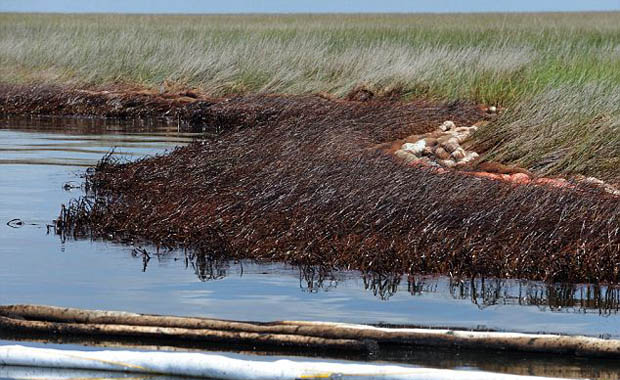Associated Press reporter Janet McConnaughey reported from New Orleans. Jay Reeves contributed to this report from Birmingham, Alabama.
[dropcap]A[/dropcap]t first glance, the marshy, muddy coastline of Bay Jimmy in southeast Louisiana appears healthy three years after the nation’s worst offshore oil spill. Brown pelicans and seagulls cruise the shoreline, plucking fish and crabs from the water. Snails hold firm to tall blades of marsh grass.
Underneath the surface, environmentalists and scientists fear there may be trouble, from tiny organisms to dolphins. Yet the long-term environmental impact from the spill is still not fully known and will likely be debated for years to come.
BP has spent billions of dollars on cleanup efforts since the Deepwater Horizon rig exploded and a well ruptured April 20, 2010, spilling 200 million gallons of crude.
The oil fouled 1,110 miles of beaches and marsh along Louisiana, Mississippi, Alabama and Florida. Fishing waters were closed and thousands of people who depend on the Gulf’s deep blue waters wondered if the coast would ever be the same again. Crews continue to find oil buried underneath beaches whenever a tropical storm stirs up the Gulf.
“Visually, the coast looks great, and I think most of what was visible is gone,” said David Muth, director of the National Wildlife Federation’s Mississippi River Delta Restoration Program.
Still, oil sheens penetrated deep into marshes, worrying Muth.
“The micro-organisms and the smallest invertebrates, they’re all eating the grasses and eating each other,” he said. “Some of those persistent chemicals just get built up, and as each creature comes along and eats it, the toxins can be amplified right up the food chain until you get to the top predators, like dolphins and sea turtles.”
More than 650 stranded dolphins have been found since the spill, Muth said.
Click to read more […]







